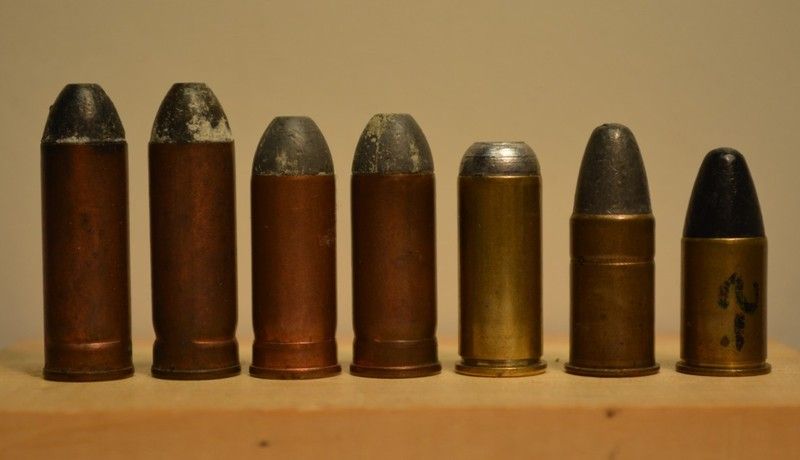The rims on the commercial ammunition that S&W supplied with their guns was, from what I've read, nominally .525, with some running even larger. Remember, this was the early days of cased ammunition, and there could be a lot of variations that worked in. I've never been fortunate enough to find an example of the original S&W production ammunition, but I've heard that there are some examples out there.
Apparently the Army found that SOME of the cartridges S&W supplied would work fine in both the Schofield and the Peacemaker, while others, the ones with the larger rims, interfered and rendered the gun to a 3 shot.
When it became apparent that the S&Ws were going to be in Army hands for awhile, Frankford Arsenal took over production of the round and reworked its dimensions so that the rim would work in both the S&W and the Peacemaker.
Today's .45 S&W cartridge is dimensionally very similar to the compromise design that Frankford Arsenal came up with.
Howdy Again
I won't say I know everything there is to know about the Schofield cartridge, but that information is new to me. Care to mention where you read it?
On July 12, 1875 Smith and Wesson delivered 3000 Schofield revolvers to the Springfield Armory, across town from the Smith and Wesson factory. According to Jerry Kuhnhausen in his Colt Single Action Revolvers Shop Manual, the Frankford Arsenal began supplying the Revolver Ball Cartridge, Caliber 45, M1875 sometime in 1875. He goes on to say, "The M1875 cartridge enabled ordinance to manufacture one .45 caliber revolver cartridge that could be fired in both the Colt S.A.A. and the S&W Schofield Model Revolvers."
This was the Benet primed round I have referred to several times in this thread. In the photo below the two copper cased rounds, 3rd and 4th from the left, are to the best of my knowledge a pair of those rounds. Unfortunately, there is no marking on the case heads. But the two longer, 45 Colt rounds on the left have no markings, and I can prove they were made by the Frankford Arsenal in 1874.
The rim diameter of those two Benet primed Schofield rounds is .518, almost exactly the same as modern Schofield rims.
And they fit quite nicely in the cylinder of my Colt.
So, if Frankford Arsenal standardized the dimensions of the Schofield round the very same year they were accepted by the Army, what the heck are we arguing about? A few rounds that S&W supplied just for the trials? By the time the Army got serious about the Schofield ammo dimensions, all those details had been worked out and the ammo could be fired in either the Colt or the Smith.
**********
By the way, the two rounds all the way on the right in my photo are a 455 Colt and a 455 MK II. The rim diameter of the 455 Colt is .530, the rim diameter of the 455 MK II is .525. Yes, Jim Watson, they both will fit into my Colt cylinder. Unfortunately I only have one of each, so I cannot have two of each in adjacent chambers to see if they fit. According to Kuhnhuasen, the SAA was chambered for 455 Eley and 476 Eley. I dunno if 455 Eley is the same as either of my cartridges.
On another note, Ken Howell patented a 45 Colt conversion cylinder for the replica 1858 Remington C&B revolvers. Because the cylinder was too small to accommodate six 45 Colt rims next to each other, he angled the chambers out approximately 1/2 of one degree, so the rims would fit.
P.S. The rims on those 45 Colt rounds are only .502 in diameter. Just enough to keep the rounds from sliding through the chambers.


